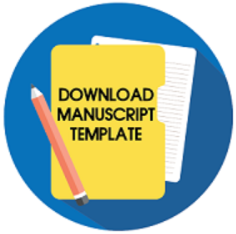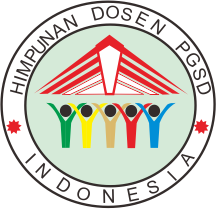Increased Motivation and Ability Student Numeracy Through the Application of a Contextual Approach to Mathematics Learning

Downloads
This research aims to describe and analyze: 1) the implementation of a contextual approach to mathematics learning in perimeter of plane figures material to increase the motivation and numeracy skills of third-grade students at Cawan Jatinom Klaten Elementary School, 2) the increase in students' learning motivation after implementing the contextual approach, and 3) the improvement in students' numeracy skills following its application. The research employed a Classroom Action Research (CAR) design, comprising planning, implementation, observation, and reflection. The subjects consisted of 12 third-grade students, and data were collected through tests, observations, interviews, and documentation. Data analysis was conducted using both quantitative and qualitative methods. The results showed that the contextual learning approach, implemented through the use of measuring tapes and real objects inside and outside the classroom, successfully increased students' engagement and understanding of perimeter concepts. Students became more active and motivated; the classroom atmosphere became more conducive to learning, and instruction shifted from a teacher-centred to a student-centred approach. After two cycles of intervention, students' numeracy skills improved, as the hands-on use of real objects helped them grasp concepts such as length, width, and circumference more easily. It is recommended that the contextual learning approach be applied in other classes or explored further to enhance mathematics teaching methods in general.
Downloads
Afni, N., & Hartono. (2020). Contextual teaching and learning (CTL) as a strategy to improve students mathematical literacy. J. Phys.: Conf. Ser, 1–8. https://doi.org/10.1088/1742-6596/1581/1/012043
Arends, R. I. (2018). Teaching for Student Learning. Roudledge Taylor & francis Group.
Arikunto, S., Suhardjono, & Supardi. (2018). Penelitian Tindakan Kelas. Bumi Aksara.
Astati. (2016). Efforts to increase student learning motivation in mathematics and Indonesian language learning through contextual learning approach. Suara Guru: Jurnal Ilmu Pendidikan Sosial, Sains, dan Humaniora, 2(1), 19–23. http://dx.doi.org/10.24014/suara%20guru.v2i1.2037
Cahyani, N. N., Witono, A. H., & Setiawan, H. (2022). Profile of numeracy skills of third grade students at SDN 2 Kuta academic year 2021/2022. Jurnal Ilmiah Profesi Pendidikan, 7(2b), 534 – 538. https://doi.org/10.29303/jipp.v7i2b.546
Chityadewi, K. (2019). Improving mathematics learning outcomes on fraction addition operations material using the CTL (Contextual Teaching and Learning) approach. Journal of Education Technology, 3(3), 196–203. https://doi.org/https://doi.org/10.23887/jet.v3i3.21746
Clarke, D., & Roche, A. (2016). Using contextualized tasks to engage students in meaningful and worthwhile mathematics learning. Journal of Mathematical Behavior, 51(1), 95– 108./https://doi.org/10.1016/j.jmathb.2017.11.006
Delyana, H., Gistituati, N., Asmar, A., Yerizon, Armiati, & Setyawan, H. (2023). E-module-assisted contextual teaching and learning (CTL) learning model improves statistical reasoning ability. Community Practitioner, 21(3), 463–476. https://doi.org/10.5281/zenodo.10874547
Dyment, J. E., Chick, H. L., Walker, C. T., Thomas, P. N., Chick, H. L., & Macqueen, T. P. N. (2018). Pedagogical content knowledge and the teaching of outdoor education education. Journal of Adventure Education and Outdoor Learning, 1(1), 1–20. https://doi.org/10.1080/14729679.2018.1451756
Gadanidis, G., Clements, E., & Yiu, C. (2018). Group theory, computational thinking, and young mathematicians. Mathematical Thinking and Learning, 20(1), 32–53. http://dx.doi.org/10.1080/10986065.2018.1403542
Gök, M., & Erdoğan, A. (2017). Sınıf ortamında rutin olmayan matematik problemi çözme: Didaktik durumlar (in Turkish). YYÜ Eğitim Fakültesi Dergisi (YYU Journal of Education Faculty), 14(1), 140–181. https://doi.org/10.23891/yyuni.2017.6
Hadi, S. (2015). Realistic Mathematics Education and Its Implementation. Penerbit Tulip.
Hadi, S., & Zaidah, A. (2021). Analysis of numeracy literacy ability and self-efficacy of madrasah students in realistic mathematics learning. Jurnal Ilmiah Wahana Pendidikan, 7(7), 300–310. https://doi.org/10.5281/zenodo.5716119
Han, W., & Santoso, D. (2017). Numeracy Literacy Support Materials. Kementerian Pendidikan dan Kebudayaan.
Hoogland, K., de Koning, J., Bakker, A., Pepin, B. E. U., & Gravemeijer, K. (2018). Changing representation in contextual mathematical problems from descriptive to depictive: The effect on students’ performance. Studies in Educational Evaluation, 58(4), 122–131. https://doi.org/https://doi.org/10.1016/j.stueduc.2018.06.004
Johnson, E. B. (2018). Contextual Teaching and Learning: Making Teaching and Learning Activities Fun and Meaningful. MLC.
Maslahah, S., Ishartiwi, I., Mumpuniarti, M., & Normawati, Y. (2019). Contextual teaching and learning-based functional academic teaching materials for the teachers specialized in educating the students with visual impairment. Jurnal Prima Edukasia, 7(2), 182–196. https://doi.org/https:/doi.org/10.21831/jpe.v7i2.28738
Miles, M. B., Huberman, A. M., & Saldana, J. (2014). Qualitative Data Analysis: A Methods Sourcebook. SAGE Publications, Inc.
Murti, R. C. (2023). Culturally responsive teaching to support meaningful learning in mathematics primary school: A content analysis in student’s textbook. Jurnal Prima Edukasia, 11(2), 294–302. https://doi.org/http://dx.doi.org/ 10.21831/jpe.v11i2.63239
Nurcahyono, A. N. (2023). Improving numeracy literacy skills through learning models. Hexagon: Jurnal Ilmu dan Pendidikan Matematika, 1(1), 19–29. https://doi.org/https://doi.org/10.33830/hexagon.v1i1.4924
Otte, C. R., Bølling, M., Elsborg, P., Nielsen, G., & Bentsen, P. (2019). Teaching maths outside the classroom: Does it make a difference? Educational Research, 1(1), 1–7. https://doi.org/10.1080/00131881.2019.1567270
Özreçberoğlu, N., & Çağanağa, C. K. (2018). Making it count: Strategies for improving problem-solving skills in mathematics for students and teachers’ classroom management. Eurasia: Journal of Mathematics, Science and Technology Education, 14(4), 1253–1261. https://doi.org/10.29333/ejmste/82536
Patta, R., Rahman, A., & Nur, A. S. (2022). Implementation of Realistic Mathematics Education (RME) approach to improve numeracy literacy of fifth grade students at SD Negeri 157 Pasaraya, Bontobahari District, Bulukumba Regency. Global Journal Basic Education, 1(4), 458–467. https://doi.org/DOI.10.35458
Pei, C., Weintrop, D., & Wilensky, U. (2018). Cultivating computational thinking practices and mathematical habits of mind in Lattice Land. Mathematical Thinking and Learning, 20(1), 75– 89.http://dx.doi.org/10.1080/10986065.2018.1403543
Priyadi, Gatot, H., & Yumiati. (2021). The effect of contextual teaching and learning (CTL) model with outdoor approach towards the students’ ability of mathematical representation. Education Quarterly Reviews, 4(3), 441–450. https://doi.org/10.31014/aior.1993.04.03.352
Purba, G. F., Rohana, A., Sianturi, F., Giawa, M., Manik, E., & Situmorang, A. S. (2022). Implementation of the Indonesian Realistic Mathematics Education (PMRI) approach in the Merdeka Belajar concept. Sepren: Journal of Mathematics Education and Applied, 4(1), 23–33. https://doi.org/https://doi.org/10.36655/sepren.v4i1
Putra, Z. H. (2022). Numeracy Competency Improvement Training Module for Teachers. Ministry of Education, Culture, Research and Technology.
Rakhmawati, Y., & Mustadi, A. (2022). The circumstances of literacy numeracy skill: Between notion and fact from elementary school students. Jurnal Prima Edukasia, 10(1), 9–18. https://doi.org/https://doi.org/10.21831/jpe.v10i1.36427
Ridwan, A., Hartono, Y., & Araiku, J. (2021). Development of contextual teaching and learning (CTL)- based teaching materials to train students’ representation ability. Advances in Social Science, Education and Humanities Research, 656(1), 7–14. https://doi.org/10.2991/assehr.k.220403.002
Rijal, F. (2015). Improving student learning outcomes through contextual teaching and learning approach on the concept of green plants in grade V at MIN Tungkob Aceh Besar. Pionir: Jurnal Pendidikan, 4(2), 1–20. http://dx.doi.org/10.22373/pjp.v4i2.181
Sa’ud, U. S. (2018). Educational Innovation. Alfabeta.
Selvianiresa, D., & Prabawanto, S. (2017). Contextual teaching and learning approach of mathematics in primary schools. International Conference on Mathematics and Science Education (ICMScE), 1–7. https://doi.org/10.1088/1742-6596/895/1/012171
Sintawati, M., & Mardari, A. (2021). Mathematics Learning Strategies in Elementary Schools. Penerbit K-Media.
Sirait, E. D. (2016). The effect of learning interest on mathematics learning achievement. Formatif:Jurnal Ilmiah Pendidikan MIPA, 6(1), 35–43. https://doi.org/10.30998/formatif.v6i1.750
Sugiyanto. (2018). Innovative Learning Models. FKIP UNS.
Suharja, Mustadi, A., & Oktari, V. (2024). Examining brain-based learning assisted open-ended approach to mathematics understanding concept. Jurnal Prima Edukasia, 12(1), 19–29. https://doi.org/10.21831/jpe.v12i1.67303
Syaifuddin, Nurlaela, L., & Perdana, S. P. (2021). Contextual teaching and learning (CTL) model to improve students’ learning outcomes at Senior High School of Model Terpadu Bojonegoro. Contextual Teaching and Ijorer: International Journal of Recent Educational Research Bojonegoro, 2(5), 528–535. https://doi.org/10.46245/ijorer.v2i5.143
Triwahyuningtyas, D., N.R., S., Firdayanti, E., & Aziza, N. (2022). Multiplication and division of fractions based on numerical literacy electronic module for fifth grade elementary school students. Jurnal Prima Edukasia, 10(1), 37–46. https://doi.org/10.21831/jpe.v10i1.44881
Uno, H. B. (2019). Motivation Theory and Its Measurement. Bumi Aksara.
Yudha, A., Sufianto, Damara, B. E. P., Taqwan, B., & Haji, S. (2018). The impact of contextual teaching and learning (CTL) ability in understanding mathematical concepts. Advances in Social Science, Education and Humanities Research, 295(1), 170–173. https://doi.org/10.2991/icetep-18.2019.42
Yusron, E., & Sudiyatno, S. (2021). How is the impact of Assessment for Learning (AfL) on mathematics learning in elementary schools? Jurnal Prima Edukasia, 9(1), 75– 84./https://doi.org/10.21831/jpe.v9i1.34865
Yuwandra, R., & Arnawa, I. M. (2020). Development of learning tools based on contextual teaching and learning in fifth grade of primary schools. Journal of Physics: Conference Series, 1554(1), 1– 7. https://doi.org/10.1088/1742-6596/1554/1/012077
Copyright (c) 2025 Jurnal Prima Edukasia

This work is licensed under a Creative Commons Attribution-ShareAlike 4.0 International License.
The copyright of the received article shall be assigned to the journal as the publisher of the journal. The intended copyright includes the right to publish the article in various forms (including reprints). The journal maintains the publishing rights to the published articles.

Jurnal Prima Edukasia by http://journal.uny.ac.id/index.php/jpe/index is licensed under a Creative Commons Attribution-ShareAlike 4.0 International License.


























